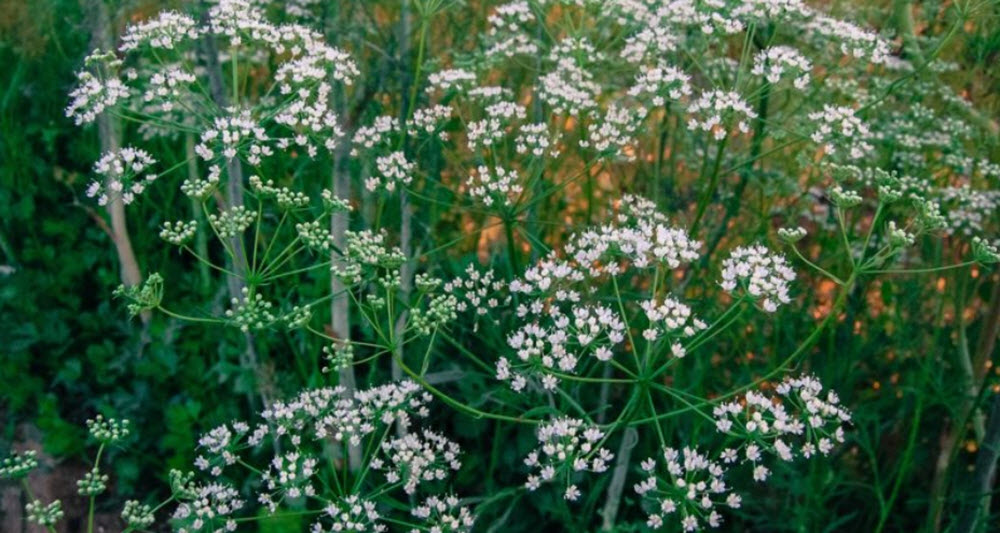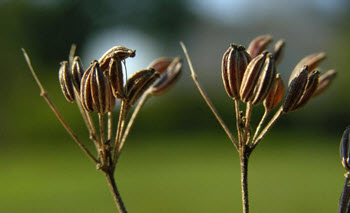Contents
Pimpinella anisum is a flowering plant native to the eastern Mediterranean region and southwestern Asia. The flavor of the aniseeds (the fruits of the plant) somewhat resembles liquorice, fennel and star anise.
Within its native range, it has a long history of flavoring food and alcoholic drinks, as well as being used as a folk remedy against various ailments.

Scientific classification
| Kingdom | Plantae |
| Order | Apiales |
| Family | Apiaceae |
| Genus | Pimpinella |
| Species | Pimpinella anisum |
Folk medicine
Roman author Pliny the Elder (AD 23–79) wrote about how anise was used to treat insomnia in the evening and – when chewed with horse parsley and honey – to get rid of bad breath in the morning. Mixed with wine, the ancient Romans considered it a cure for asp bites. The Romans also liked to serve spicy cakes called mustaceoe at the end of large meals, to aid digestion, and these cakes contained plenty of aniseed.
 In later European folk medicine, aniseeds were consumed to reduce flatulence, colic and menstrual cramps. According to English botanist John Gerard’s (c. 1545–1612) encyclopedia “Great Herball” anise could also “provoketh urine gently, maketh abundance of milke, and stirreth up bodily lust: it staieth the laske, and also the white flux in women. Laske is another word for diarrhea, while white flux type of vaginal discharge.
In later European folk medicine, aniseeds were consumed to reduce flatulence, colic and menstrual cramps. According to English botanist John Gerard’s (c. 1545–1612) encyclopedia “Great Herball” anise could also “provoketh urine gently, maketh abundance of milke, and stirreth up bodily lust: it staieth the laske, and also the white flux in women. Laske is another word for diarrhea, while white flux type of vaginal discharge.
Anise essential oil
The main component of anise essential oil is anethole, which comprises 80-90% of the oil. Examples of minor components are estragole, 4-anisaldehyde and pseudoisoeugenyl-2-methylbutyrates.
Anise essential oil can be extracted from the aniseeds using steam distillation or supercritical carbon dioxide. The oil content in the aniseeds vary depending in growing conditions.
Anethole
Anethole, also known as anise camphor, is an organic compound that largely contributes to the smell and flavor of aniseeds, fennel, liquorice, anise myrtle, magnolia blossoms, camphor, and star anise.
This colorless, fragrant and mildly volatile liquid is widely used as a flavoring substance for food and beverages.
Anethole is highly soluble in ethanol but only slightly soluble in water. This is why some liquers that contain a lot of anethole change from clear to opaque if you pour some water into them, a phenomenon known as the ouzo effect.
Anise in food & drinks
Examples of foods and treats flavored with aniseed or aniseed oil:
- Atole de anís, a mexican maize-based drink
- Anisbögen, a cookie eaten by Austrians during Christmas
- Springerle, a German biscuit with an embossed design
- Pizzelle, a type of traditional Italian waffle cookie
- Pfeffernüsse, tiny spice cookies popular in parts of Northern Europe
- British troach drops
- Aniseed balls, a comfit type of hard round sweet sold in the UK, Ireland, Malta, South Africa, Canada, New Zealand, and Australia.
- The black beans in a mix of Jelly beans. (Jelly beans are bean-shaped sugar candies with soft candy shells and thick gel interiors.)
- Peruvian picarones, a treat made from squash and sweet potatoe
- Bizcochitos, traditionally served as celebrations in New Mexico, USA
- Greek ouzo
- French anisette and pastis
- Italian sambuca
- Bulgarian mastika
- Absinthe, from the Swiss Canton of Neuchâtel
- Spanish Anís del Mono
- Herbs de Majorca, from the island Majorca
- Raki, from Turkey and Armenia
- Arak, produced in various Middle Eastern contries
- Algerian Anisette Cristal
- Colombian aguardiente
- Mexican Xtabentún
- Virgil’s root beer in the United States
About the plant
Anise is an herbaceous annual plant that frequently grows to be at least 90 cm (3 ft) tall. The plant prefers light and well-draining soil with plenty of nutrients.
The leaves close to the base of the plant are up to 5 cm long and shallowly lobed, while the higher up leaves are feathery and divided into numerous small leaflets.
The root is a taproot.
The white flowers are small, rarely more then 3 mm in diameter, and sits in dense umbels.
The oblong fruit, which is called aniseed, is 3-6 mm long.
